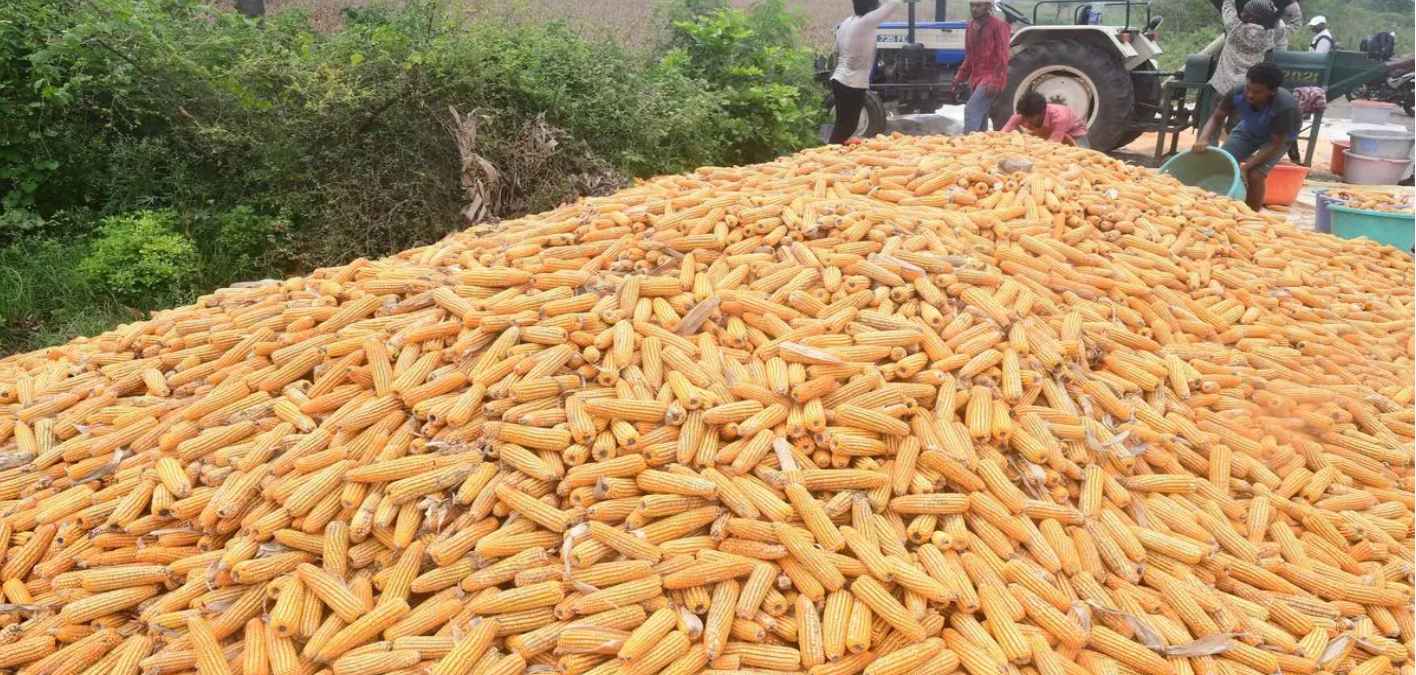Area under maize gains as Indian growers switch from cotton, pulses

Farmers have planted more corn (maize) in Madhya Pradesh, Karnataka and Maharashtra and the total area under the hardy crop in the country has exceeded 81.24 lakh hectares (lh) as of August 18. This is against 79.41 lh covered a year ago. Delayed arrival of monsoon and slow progress has resulted in a section of farmers preferring to plant corn over other crops such as pulses and cotton .
Madhya Pradesh has seen the area under maize increase to 17.41 lakh hectares (lh) from 15.99 lh a year ago. The area under maize in MP is above the normal (average of five years) of 13.48 lh. Similarly, Karnataka has seen maize area increase to 14.53 lh (13.79 lh in the same period a year ago) and Maharashtra at 8.77 lh (8.74 lh). The area is up marginally in Uttar Pradesh at 7.54 lh (7.49 lh), Jharkhand at 2.19 lh (1.99 lh) and Telangana at 2.05 lh (2.01 lh). However, the acreage is marginally down in Rajasthan at 9.42 lh (9.44 lh) and Gujarat at 2.82 lh (2.87 lh).
Hanuman Sahay Jat, Director, ICAR-Indian Institute of Maize Research (IIMR), said the kharif acreages are on the higher side compared to last year. Due to the late onset of monsoon farmers have taken up short-duration varieties. “The crop condition is good and almost similar to the last year. We are expecting a good crop this year,” Jat said.
Record output
As per the third advance estimate, India’s maize production was a record 35.91 million tonnes (mt) during 2022-23.
However, Bhagirath Chaudhary, director, South Asia Biotechnology Centre, said the government must seriously look into the management of fall army worm, a dreaded pest that had surfaced in maize, a few years ago. “The pest is still active, but it is below the economic threshold levels in maize. Farmers have learnt to deal with the pest, but at an additional cost of ₹3,000-4,000 per acre, which results in a higher cost of cultivation for them,” he said.
“Though we are close to last year’s level of 81.5 lh , yields may be a concern this kharif on account of deficit rains and higher temperature levels in August,” said Tarun Satsangi, specialist- global commodity research at agritech firm Absolute.
















